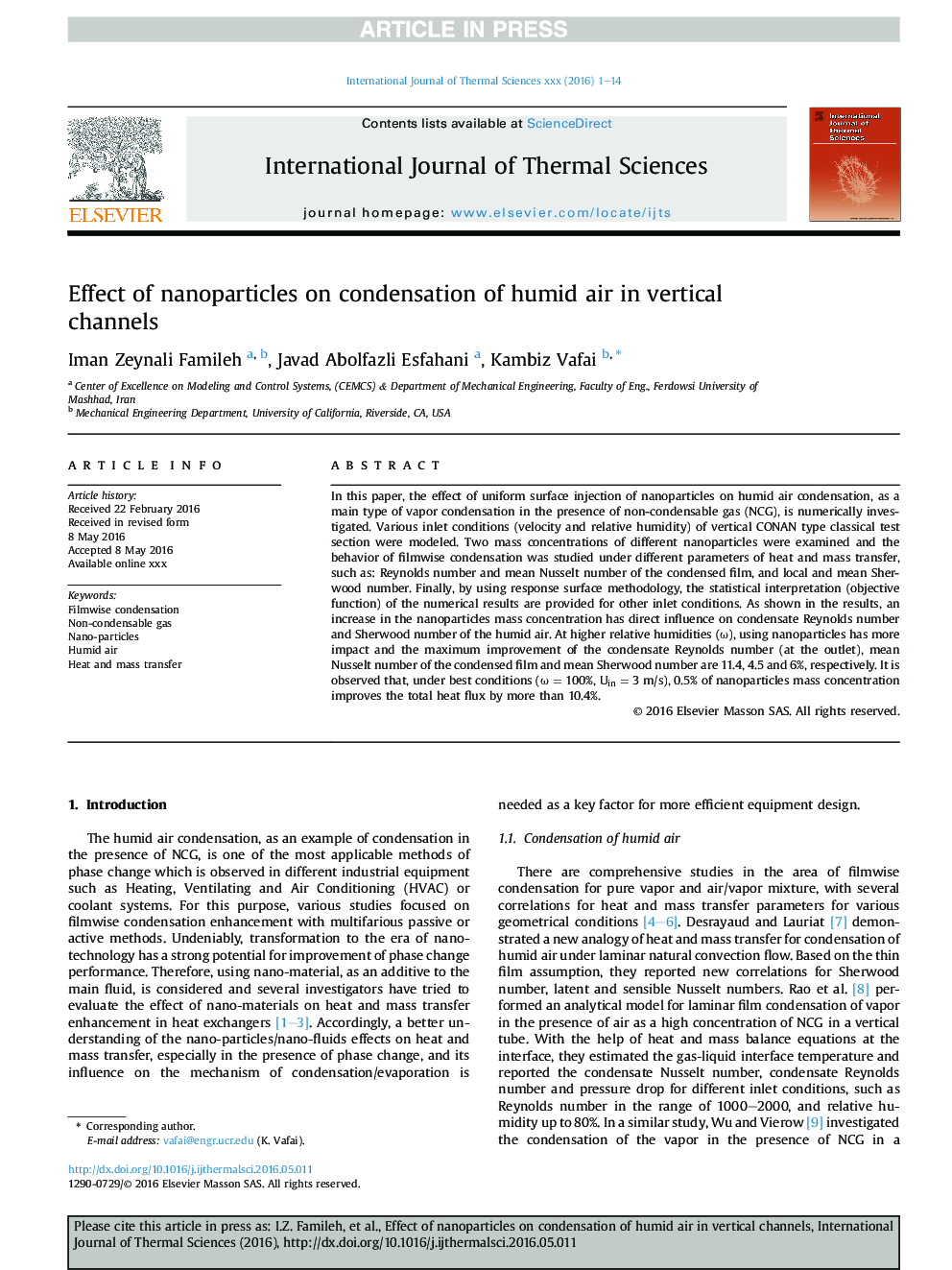| Article ID | Journal | Published Year | Pages | File Type |
|---|---|---|---|---|
| 4995481 | International Journal of Thermal Sciences | 2017 | 14 Pages |
Abstract
In this paper, the effect of uniform surface injection of nanoparticles on humid air condensation, as a main type of vapor condensation in the presence of non-condensable gas (NCG), is numerically investigated. Various inlet conditions (velocity and relative humidity) of vertical CONAN type classical test section were modeled. Two mass concentrations of different nanoparticles were examined and the behavior of filmwise condensation was studied under different parameters of heat and mass transfer, such as: Reynolds number and mean Nusselt number of the condensed film, and local and mean Sherwood number. Finally, by using response surface methodology, the statistical interpretation (objective function) of the numerical results are provided for other inlet conditions. As shown in the results, an increase in the nanoparticles mass concentration has direct influence on condensate Reynolds number and Sherwood number of the humid air. At higher relative humidities (Ï), using nanoparticles has more impact and the maximum improvement of the condensate Reynolds number (at the outlet), mean Nusselt number of the condensed film and mean Sherwood number are 11.4, 4.5 and 6%, respectively. It is observed that, under best conditions (Ï = 100%, Uin = 3 m/s), 0.5% of nanoparticles mass concentration improves the total heat flux by more than 10.4%.
Related Topics
Physical Sciences and Engineering
Chemical Engineering
Fluid Flow and Transfer Processes
Authors
Iman Zeynali Famileh, Javad Abolfazli Esfahani, Kambiz Vafai,
